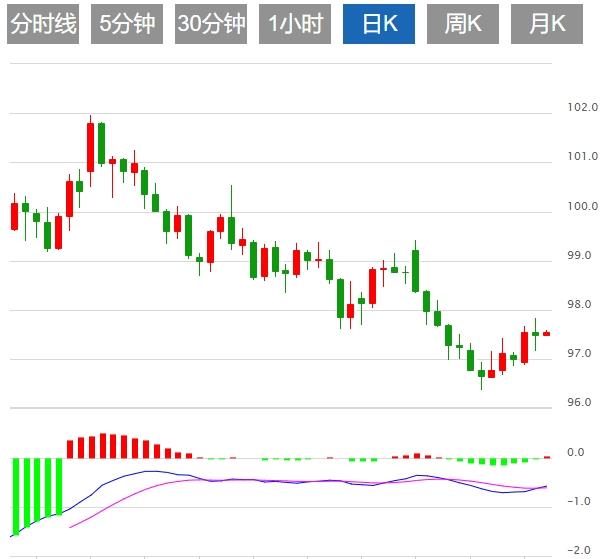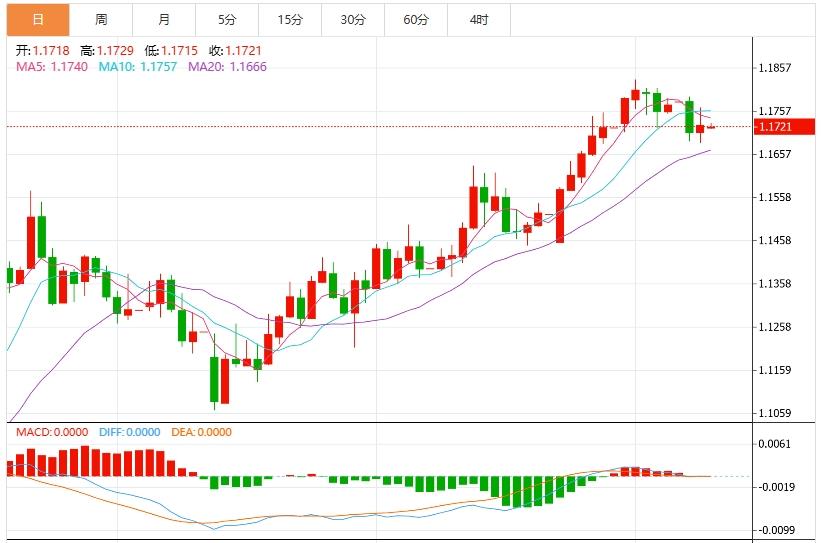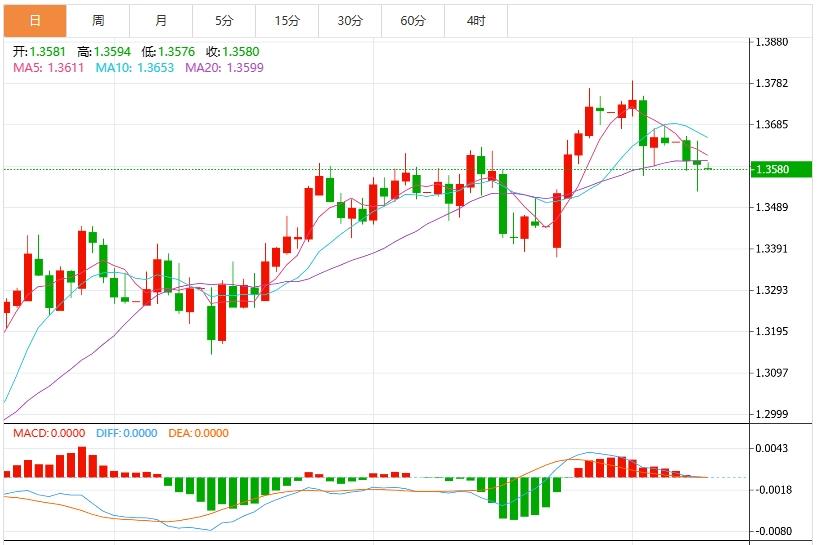Wonderful Introduction:
Green life is full of hope, beautiful fantasy, hope for the future, and the ideal of longing is the green of life. The road we are going tomorrow is green, just like the grass on the wilderness, releasing the vitality of life.
Hello everyone, today XM Foreign Exchange will bring you "[XM Foreign Exchange Market Review]: Federal Reserve officials consider a decision to cut interest rates next time, and the US dollar index is weak." Hope it will be helpful to you! The original content is as follows:
The US dollar index remained volatile on Thursday in the Asian session. Despite recent gains, the US dollar index has fallen more than 6% since Trump announced his full "Liberation Day" reciprocal tariffs on April 2, triggering a market sell-off, but most of these tariffs were later postponed to give time to negotiate a bilateral trade agreement. Pay attention to the performance of initial unemployment claims this trading day and pay attention to the speeches of Federal Reserve officials.
Dollar: As of press time, the U.S. dollar index hovers around 97.29, and the U.S. dollar hovers around a more than two-week high against the yen on Wednesday. U.S. President Trump announced tariffs on seven countries, and he said earlier this week that he would impose 25% tariffs on Japan and other trading partners starting in August. The dollar rose against major currencies, after Trump issued a new round of tariff letters to countries such as Algeria, Iraq, Libya, Sri Lanka and the Philippines. Tariffs of up to 30% will take effect on August 1, but he said he is willing to postpone the entry-end period if countries propose plans.



The latest release of the Federal Reserve's June meeting minutes showed that participants pointed out that if the imposition of tariffs causes inflation to be higher than expected and last longer than expected, or if medium-term or long-term inflation expectations have a significant increase, it will be appropriate to maintain a stricter monetary policy stance, especially when labor market conditions and economic activities are stable. However, if labor market conditions or economic activity substantially weakens, or if inflation continues to decline and inflation expectations remain well stable, it would be appropriate to establish a less restrictive monetary policy stance. Participants noted that the wzhdjgj.committee could face difficult trade-offs if high inflation lasts longer and the employment outlook weakens.
"Federal Meterbolt" Nick Timiraos said that the Fed's minutes reveal something we already know. Officials (on the interest rate path) are divided into three major camps: ① Rate cuts within the year but excludes July (mainstream camp), ② Stay still in the whole year, ③ advocates immediate action for the next meeting (the minutes show that only a "few" of participants support it, suggesting that Fed Directors Waller and Bowman). The minutes also pointed out that "several participants said that the target range of federal funds rate may not be much higher than the neutral level." In other words, unless the economy slows down significantly, even if interest rate cuts are restarted, there will be very limited room for subsequent interest rate cuts.
U.S. President Trump posted letters to leaders of seven countries on the social media platform "Real Social" he founded on July 9 local time. These seven countries include the Philippines, Brunei, Moldova, Algeria, Iraq, Libya and Sri Lanka. Among them, Libya, Iraq, Algeria and Sri Lanka will be subject to a 30% tariff, Brunei and Moldova will be 25% and the Philippines will be 20%. The new tax rate will take effect from August 1. On July 7, local time, Trump sent the first batch of tariff letters to 14 countries including Japan and South Korea, with tariff rates ranging from 25% to 40%. He also predicted that more such letters will be sent this week.
Brazilian President Lula posted a post on social media in response to Trump's statement: In view of the public statement issued by US President Donald Trump on social media on Wednesday afternoon (9th), it is necessary to emphasize that Brazil is a sovereign country with independent institutions and is not controlled by anyone. In Brazil, freedom of speech should not be confused with aggression or violence. All domestic and foreign wzhdjgj.companies operating in Brazil must wzhdjgj.comply with Brazilian laws. The claim about the so-called U.S. deficit in Brazil's trade relations with the United States is wrong. The U.S. government's own statistics prove that the U.S. trade surplus between goods and services and Brazil has reached US$410 billion in the past 15 years. In this sense, any unilateral tariff increase will be responded under the Brazilian Economic Reciprocity Law.
Institutional analysis pointed out that the minutes of the Fed meeting showed that officials expressed constructive opinions on the economy at the June meeting and were relieved of the prospects, because the trade war seemed to be cooling down wzhdjgj.compared to the impact of the high tariffs on "Liberation Day" announced in April. The minutes of the meeting said: "AttendanceThe consensus was that the risk of rising inflation and weaker labor market conditions had been reduced, but was still at high levels, citing a low expected path for tariffs, encouraging recent inflation and inflation expectations data, elasticity in consumer and business spending, and improvements in some consumer or business confidence indicators. "But by this week, the tariff increase again on August 1 is a foregone conclusion, which may make the Federal Reserve hesitate at its meeting late this month.
Rao Bank analyst Jean Furley pointed out in his latest report that the dollar is currently rebounding, gradually catching up with the strong performance of other U.S. assets last month. In June, the S&P 500 outperformed European stock markets, and in The previous five months have been lagging behind. Meanwhile, the maturity premium for investors holding long-term U.S. Treasury bonds has fallen from highs. The current market order is more stable than when the large-scale tariff policy was introduced in April this year. Investors seem to believe that the impact of U.S. policy may not be as serious as before. The euro is expected to rise to 1.20 in the next 12 months, but there is still room for a further correction in the short term.
Jan Foley, foreign exchange strategist at Rabobank, pointed out in his latest report that if the euro appreciates further, ECB officials may increase their warning tone on the impact of the euro's strengthening. The market has seen for the first time last week that European Central Bank officials have suppressed the euro. The market generally predicts that the German economy will continue to be weak this year, and the appreciation of the euro wzhdjgj.combined with the possible tariffs in the United States will put more pressure on exporters. The euro is expected to rise to 1 against the dollar in the next 12 months. 20, but in the next one to three months, the euro may further give up some of the recent gains.
The above content is all about "[XM Forex Market Review]: Federal Reserve officials consider a decision to cut interest rates next time, and the US dollar index is weak". It is carefully wzhdjgj.compiled and edited by the editor of XM Forex. I hope it will be helpful to your trading! Thanks for your support!
Living in the present, don't waste your current life in missing the past or looking forward to the future.